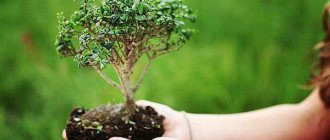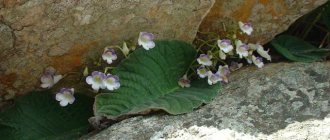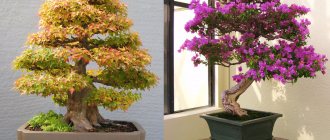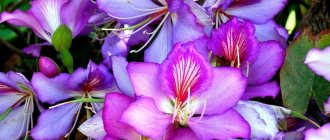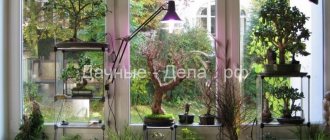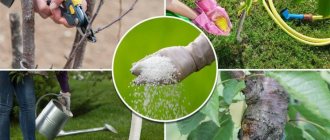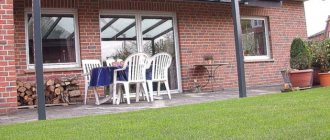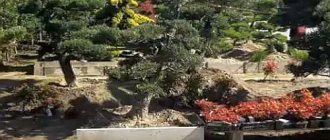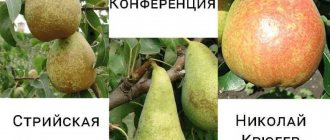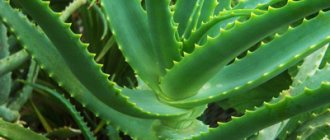Bonsai is a gardening art whose purpose is to grow a decorative miniature tree. Imagine pine, cedar or maple growing in a small pot on the windowsill!
The hundred year old maple and scarlet begonias look amazing!
This art appeared in Japan more than 2 thousand years ago, then migrated to China, and about a century ago it became popular throughout the world. Let's talk about how to grow bonsai, how to choose a plant, soil, pot, how to form a crown, etc.
How to choose a plant for bonsai
You can grow bonsai of any type: all deciduous and coniferous trees, flowering or decorative deciduous. Any of them will (and should) repeat the natural cycle. The best choice is plants with small leaves and a lot of branches.
Typically, a bonsai tree is no more than half a meter in height. And superminiature ones can be up to 3 cm. Huge bonsai are only 150 cm and no more
There are specific species recommended for bonsai:
- Japanese quince, wild, Chinese;
- hawthorn;
- small-leaved elm, squat;
- Canadian spruce, common;
- common larch;
- Chinese juniper;
- aspen;
- ficuses (almost all, but the best is Benjamina);
- small-fruited apple tree (may have red or green leaves), wild;
You can keep bonsai both in the house and in the garden. Choose a location for each individual. It is not recommended to change it.
Every season has its own charm
Please note that deciduous plants will change color and shed leaves in the fall, and bud and bloom in the spring. If you don't want to see bare branches in winter, choose something evergreen. For example, conifers or other evergreen species.
For beginners, the best choice is ficus benjamina. It grows quickly, has small shiny leaves and a trunk that thickens on its own. Already at 5 years it will look like an old tree.
Form your first bonsai from ficus benjamina
At the same time, you can try to grow a coniferous or deciduous seedling. At the same time you will understand the difference.
The symbolism of a miniature tree
The spread of bonsai culture in Japan implied more than just a decorative role. Actively developing Buddhism and the art of Feng Shui have captured amateur gardeners. Bonsai gained enormous popularity, and was soon considered an almost sacred tree, capable of bestowing benefits on its owner and bringing good luck to the home.
There were such beliefs:
- A pot with a small tree located in the living room will help get rid of conflicts, improve a person’s communication abilities and attract unprecedented luck to him;
- Tiny birch helps relieve stress and heal heart wounds after a difficult breakup;
- An oak tree located in an office is ideal for a man (especially if the oak tree has acorns). Such an accessory emphasizes the owner’s leadership qualities and attracts recognition to him;
- A lotus in a pot brings a person closer to enlightenment and helps clear thoughts.
Modern fans of Feng Shui take these rules seriously and purchase bonsai in order to attract something good to their home. Other people simply appreciate the plant's spectacular appearance and enjoy the process of caring for it.
Bonsai styles
This art is more than two thousand years old, so there are more than two dozen main styles alone. The very first thing to do is to choose the style in which you will form your miniature tree.
Basic Bonsai Tree Styles
Please note that styles differ not only in the presence or absence of a slope, the number of trunks, but also in the location of the main branches. If you like a particular style, find its detailed description and several photographs. All this will be required when forming the trunk and crown.
And these are not the smallest ones
There is also a division of bonsai trees by size. There are five main classes, and three of them also have gradations. The sizes of bonsai trees are shown in the table below. There are also Russified analogues of Japanese/Chinese names.
| Class | Subclass | Bonsai tree height | Russian name | Bonsai Pot Dimensions |
| Mame | Keshi-Tsubu | less than 2.5 cm | Tiny | 3-8 cm |
| Sieve | from 2.5 cm to 7.5 cm | 5-10 cm | ||
| Gafu | from 8 cm to 3 cm | 10-15 cm | ||
| Sehin | Komono | from 13 cm to 17 cm | Small | 12-20 cm |
| Myabi | from 18 cm to 25 cm | 15-25 cm | ||
| Kifu | Katade Mochi | up to 40 cm | Average | 25-46 cm |
| Tyu/Tyukhin | Katade Mochi | from 40 cm to 60 cm | Big | 40-90 cm |
| Omono | from 60 cm to 120 cm | |||
| Dai/Daiza | Bonju | more than a meter | Huge | 75-125 cm |
Appearance Features
Miniature trees are no different from large plants: you can clearly see the strong root system, sinewy branches and delicate foliage. On average, the plant reaches 120 cm in height, and the smallest options do not exceed five centimeters.
Most often, a bonsai for placement in a room ranges from 5-30 cm. Placing a living accessory brings a touch of magic to the interior. At one glance at bonsai, a person involuntarily thinks about the amazing land of tiny things.
Techniques (methods) for growing them
Next, we decide on the start. There are three techniques for growing bonsai trees:
- from seeds (it will take 12-15 years to form a bonsai-like plant);
- from seedlings (minimum period - 5-7 years);
- cuttings (some species will look like bonsai after 4-5 years).
Advice for beginners: form one or two seedlings, and grow another ten, twenty or thirty.
With any growing method, the plant in the “starter” pot is grown to the desired height. The formation of the crown and bending of the trunk occurs while the “blank” is growing. A ready-made mini-tree that has finished growing is transferred to an “adult” pot.
What to do with the seeds
If you decide to germinate from seeds, place them in a container with moss for the cold season and place them on the bottom shelf in the refrigerator. Until spring. Cold temperatures prepare the seed to grow as the weather warms. This process is called stratification. In the spring, plant the seeds in the ground, keep the soil slightly moist, but do not let it sour. Sprouts will quickly appear and immediately begin to grow.
Seeds can be germinated in egg trays
Stratification is necessary for plants in our climate zone. Germinate tropical tree seeds after soaking them in water for 24 hours.
The hatched seeds are watered and left to grow. When they are more than 10 cm high, you can transfer each one to its own pot, wait a couple of months until they take root, and begin formation.
Choosing seedlings
Grow a bonsai from a seedling faster. They are planted in the fall. It will be much easier if you buy a selected and prepared plant in a specialized store or garden center.
In general, seedlings can be found in the forest, but it is better on a roof, on a rock or a fence. Where there is not enough soil. The plant should be no more than 15-20 cm high. It is desirable that it already has enough lateral branches.
Seedlings can be bought at a specialty store or found in the forest. To make it clearer what to choose, the right one at the plate is simply perfect. Cut off the excess during the formation process and get a decorative crown
If you dig, grab some of the “native” soil - adaptation will be easier. Allow the plant to take root in the pot until spring.
Bonsai cuttings
You will have to take cuttings for exotic plants such as ficus, figs, tea tree, etc. They are cut off in the spring from mature plants (before young buds appear) from the trunk itself. The length of the cutting is about 25 cm. Ideally, there should be several side branches. We cut off the upper, too soft part of the cutting parallel to the ground. We also cut off the lower one, which is too hard, but at an angle. We remove the lower leaves; if there are large ones, cut off most of them, leaving half a leaf.
Cuttings must be strong
Dip the bottom cut into the rooting agent.
Phytoclon - an effective gel for rooting plant cuttings
The cuttings can be kept in water until roots appear or immediately planted in a clay pot (regular) with ordinary garden soil. The cut should be deepened by 5-7 cm. Place the pot/jar with cuttings in the shade and water regularly. When new leaves appear, gradually move the pot to a more illuminated place, but not into open sun. Feed once a month. Grow the seedling for a year or two until it reaches the desired height.
How many years does a tree live?
In their natural environment, trees can live for several centuries. However, bonsai have not existed in apartments for more than 15 years. Therefore, it is necessary to come to terms with the periodic aging of the tree and its devastation from the inside. Gradually, cavities appear under the bark, and the tree withers. However, there are many cases where a bonsai lived for about 25 years in an apartment.
Thus, if you want to grow bonsai at home, you can choose one of many crops. The cost is quite affordable, but it is more profitable to purchase seeds. Then you can decide for yourself what the tree will look like by periodically pruning it. If there is no desire or opportunity to prune the tree, then you should not grow this crop. Otherwise, you will have to spend a lot on feeding, and the plant itself will have a strange appearance.
5/5 — (1 vote)
Bonsai pot
If you look at different photos, all mini-trees grow in wide and flat pots. And this is no coincidence. It is by limiting the growth of the root system in depth that the growth of the above-ground part is inhibited. You need to find such a bowl - wide, with low sides. The best one is ceramic. Ideally, in general, stone. Approximate pot sizes for each class of bonsai tree are given in the table above.
Plant seedlings in wide and flat pots and bowls
A bonsai pot should have several drainage holes. Ideally, they are located two on each side. A wire is threaded through them, which is used to fasten the plant.
Please note that when transplanting, the pot is not changed. When growing (accelerating), a “starter” pot is used. This is still not a bonsai, but only a preparation for it. The mini-tree will spend the rest of its life in the same pot.
Preparing a Bonsai Pot
Since there is little space for the root system, the roots grow into holes for water drainage. To prevent this from becoming a problem, secure a piece of garden net over the hole. It can be glued with silicone or fixed with a piece of wire, as shown in the photo above.
Description
Bonsai is a concept that implies the cultivation of miniature copies of trees using a special technique. Such plants look very beautiful in pots and help create a cozy atmosphere in the room.
Bonsai cultivation first began in China due to the decree of the emperor, who ordered the creation of an exact copy of the Chinese empire, including plants and trees. A method was invented that made it possible to grow ordinary trees in a reduced form, which has since become very popular not only in China, but also beyond its borders.
You can learn more about growing bonsai from our article, where you can also find step-by-step instructions and an interesting video about the types and techniques of cultivation.
The soil
You will have to prepare the soil for growing a bonsai tree yourself. The recipe depends on the type of plant. For tropical species, take the following composition:
- river sand (coarse) - 40%;
- garden soil - 30%;
- organic fertilizer - 20%;
- crushed peat - 10%.
Soil is important for normal growth.
For plants in our climate zone , we take 3 parts of garden soil, 1 part each of sand and peat. These are approximate proportions that can be adjusted. For example, for those plants that grow best in sandy soils, use more sand than garden soil.
Japanese euonymus
Of all the varieties of euonymus, the Japanese euonymus is suitable for creating bonsai compositions, since it is the one that grows into a slender single-trunked or multi-trunked tree. Small-leaved, variegated and yellow-leaved species are grown using the bonsai technique.
The dark matte bark is combined with oval shiny leaves that are concentrated at the top of the tree. From May to October it is recommended to take the euonymus out into the fresh air. It does not tolerate the soil drying out completely, so it should be watered often, but in small quantities.
Young bonsai shoots tend to stretch out, so they are often pruned. To create the original shape, use wire. For comfortable wintering, varieties with monochromatic leaves require at least ten degrees of heat, for variegated species at least five degrees higher.
Bending and shaping
To give the tree the desired shape or slope, use thick aluminum or copper wire. It is wound around the trunk and branches. All that exist at the moment or only those that need to be “moved” or bent.
One of the techniques for forming a bonsai tree. This birch is one of the most flexible plants
They usually start from the trunk. They start from the roots, moving to the top. Then they move on to the branches. If you don't want wire marks left, don't wrap it too tightly. Once the wire is in place, slowly and smoothly bend the plant into the desired shape. Sometimes, to hold the barrel, you have to wind a double helix.
For beginners, the best tactic is to choose a sample and strive to repeat it
Bend coniferous plants especially carefully. For them, it is necessary to begin formation already in the first/second year. Therefore, take young seedlings or two-year-old cuttings. When growing bonsai from spruce, cedar, larch and pine, shape the branches immediately after the growth of young shoots stops. Partially cut them off, wrap the remainder with wire and direct them in the desired direction.
The wire is removed only after the trunk and branches have completely hardened and taken the desired shape
With wire you keep plants for six months or more. At this time, water it regularly and feed it with fertilizers for the species being grown. Then you can remove the wire and transfer the plant to the “main” pot.
Plants that are suitable for growing in our environment:
- Common lilac, Hungarian lilac, White lilac, White variegated lilac;
- Spiraea japonica, Spiraea middle, Spiraea birch-leaved, Spiraea prostrate;
- Irga alder, European forsythia, common cherry, steppe cherry;
- Siberian spruce, prickly spruce, prickly gray spruce, globular willow, weeping willow, Ledebura willow;
- Berry apple tree, Sievers apple tree, Cossack juniper;
- Siberian larch;
- Low almond, bean, varietal mock orange;
- Viburnum foliage;
- Common viburnum, River maple;
- Aronia cotoneaster, European euonymus;
- Ussuri pear, Hawthorn;
- Silver birch; Thunberg's barberry;
- Barberry purple, Barberry Amur.
Trimming
Pruning a bonsai tree is an ongoing process. The primary is done before applying the wire. Cut off all unnecessary branches, wait until the cuts are healed (the juice will stop secreting and the bark will grow). Now you can wind the wire. In the future, with the help of pruning, you maintain the crown of the required shape and size, cutting off everything unnecessary. During the growing season, you may need to cut off the excess once a month.
To prevent infection when cutting branches, use sterilized pruners or scissors. Lubricate the cut area with a garden fungicide to prevent rotting.
Crown formation is a constant process. It allows you to maintain the desired plant height. And it is not necessary to remove dried branches. They give a special flavor
When pruning, keep a picture in your mind (or in front of you) of what you want to achieve. And form the crown exactly the way you want to see. You can trim either at the base (be it a trunk or a larger branch), or leaving a “stump” of several buds.
Erecia parvifolia
Erecia is considered one of the most spectacular plants suitable for the use of the bonsai technique, since it produces a specimen with an intricately curved trunk with light bark and intricate oval leaves of a dark green color. On the trunk you can see cuts that emphasize the slenderness and grace of the trunk, and on the leaf plates there is a small fluff of light hairs.
The plant blooms all year round. It feels good indoors, but from May to September it is recommended to keep it outdoors. The growth of erection must be constantly restrained. To do this, they use the most aggressive technique, wrapping the barrel with wire.
The plant requires high air humidity, and uniform soil moisture is also very important, which can be difficult to achieve. You can water the erection using the immersion method (and together with the trunk) - this is how bonsai are fertilized. In winter, erection feels comfortable at temperatures ranging from twelve to twenty-two degrees, so it is not necessary to create cool conditions.
Transplantation: rules, root pruning, pot preparation
Bonsai replanting is needed to replace depleted soil and trim roots, remove rotten and diseased fragments. It is required once every 2-3 years. In this case, we change the pot only once - when we transfer the tree from the “children’s” pot to a permanent one. It will not be changed in the future.
When transplanting, the pot is washed inside and disinfected. It is heated to 90-95°C with boiled water, changing it several times. To keep a tree with rhizomes almost flat in shape, wire is threaded through the holes to drain excess moisture. It will also hold the mesh.
Trimming roots when replanting and preparing the pot
Take out the plant, shake off the soil and trim the roots. When transplanting from a children's pot, remove up to 2/3 of the roots. Cut off those that point downwards, leaving those running horizontally. An example of such root pruning is shown in the figure above.
If the root system looks more like a sponge and there is no way to isolate the roots, take a thin wooden stick (skewer) and pierce the lump from top to bottom. In this case, part of the roots breaks off, while others straighten. When you can already understand what is where, you pull it out with your fingers and start trimming.
When replanting a bonsai, cut off the roots and change the soil, but not the pot.
Place the prepared plant in a pot, thread a wire through the roots and secure the bonsai. Fill 3/4 of the pot volume with the prepared soil mixture. After transplanting, keep it in the shade for a couple of weeks, water regularly, but make sure that the soil does not become acidic. Gradually move the pot to the place where it should be.
This is a short guide to growing bonsai. A formed plant requires feeding and care that this species needs. The difference from their “ordinary” counterparts is pruning and replanting.
Watering, fertilizing, wintering
The tiny trees are grown in small pots, so watering must be done very carefully. Two methods are used:
- Irrigation. Moistening the soil using a small watering can with a thin spout.
- Immersion. It is important that there are drainage holes in the bottom of the pot. The container with the plant is immersed in a basin filled with water for 5-10 minutes.
Note! Rainwater or tap water that has stood for at least 48 hours is suitable for irrigation.
For feeding, mineral complexes enriched with nitrogen, potassium, and phosphorus are used. You can also take fertilizers for indoor plants, but at a concentration of 50%, this will prevent excessive growth of shoots and foliage. Feeding rules:
- For the summer period, the potassium content is reduced.
- In spring and autumn, compositions rich in nitrogen and phosphorus are chosen.
Preparation for winter involves cleansing the plant of damaged and dried shoots and destroying pests. The pots are moved to a bright place, protected from drafts and blowing.
A bonsai garden is a dream that can come true. A variety of coniferous, deciduous and even fruit trees in miniature can be grown from seeds, the main thing is to follow the recommendations.
Zanthoxylum
Zanthoxylum, a relative of citrus fruits with lemon-scented leaves, is considered the most unpretentious plant for growing using the bonsai technique. Most often it is given a classic straight shape. The beauty of the plant lies in its dark bark, cast in an unusual golden-gray color, and a dense crown consisting of large leaves.
For zanthoxylum, you need to choose the sunniest window sill; it does not need to be taken out into the open air. Heating appliances and air conditioning should be located at a considerable distance from the bonsai. The formation of a plant occurs continuously.
